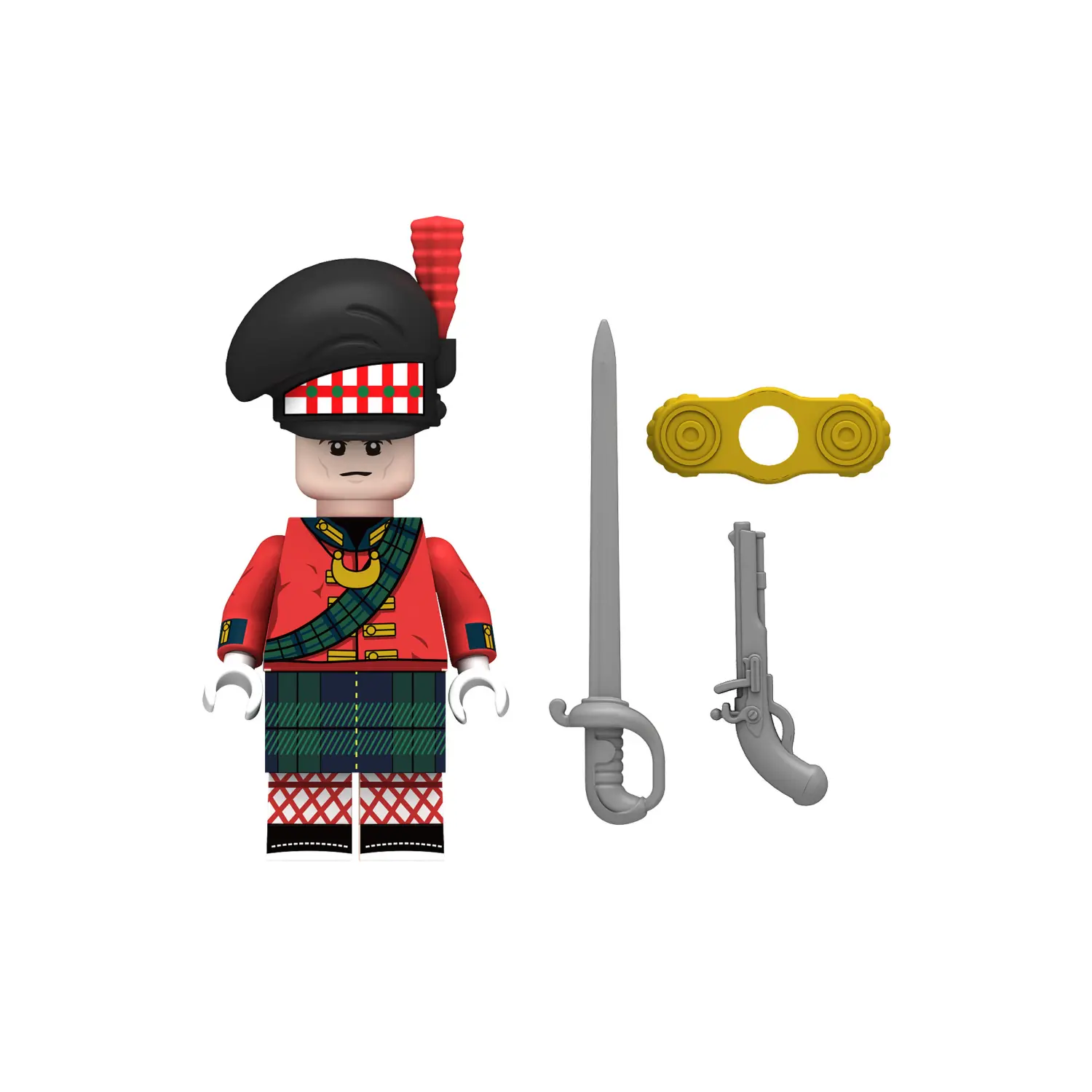This image displays a toy minifigure representing a Scottish Highlander Officer, specifically a commissioned officer of the 42nd Regiment of Foot (The Black Watch) during the Napoleonic Wars era.
Here is a detailed breakdown of the figure and its historical significance:
The Figure: Black Watch Officer This figure is clearly distinguished from the rank-and-file soldiers (like the Piper or Private) by specific symbols of rank.
-
Uniform: He wears the scarlet red tunic standard to the British Army, but with Officer-grade distinctions. The most important detail is the Gold Gorget printed on his chest (the gold crescent-shaped metal piece hanging from his neck). Historically, the gorget was a vestigial piece of armor and was the universal symbol of an officer on duty in the British Army.
-
Sash: He wears a Tartan Sash draped diagonally across his left shoulder. In Highland regiments, officers wore sashes of their clan tartan or crimson silk to denote their rank.
-
Lower Body: He wears the Black Watch tartan kilt (dark green and blue) and the distinctive red-and-white diced hose (socks).
-
Headgear: He wears the traditional Highland Bonnet featuring the check-patterned band and the famous Red Hackle (red feather plume). The Red Hackle was a special honor awarded exclusively to the Black Watch for their bravery, distinguishing them from other Highland units.
-
Accessories: The set includes gold epaulettes (shoulder scales), further marking his status as an officer.
-
Weapons: Unlike the private soldiers who carried muskets, this officer is equipped with a Basket-Hilted Broadsword (Claymore) for leading charges and a Flintlock Pistol for personal defense.
Historical Background: Highland Officers were drawn from the gentry and aristocracy of Scotland. They were expected to lead from the front, often displaying reckless bravery to inspire their men. The 42nd (Black Watch) is the most famous of all Scottish regiments. At the Battle of Waterloo (1815) and the earlier Battle of Quatre Bras, Black Watch officers and men fought savagely against French cavalry, famously forming defensive squares to repel wave after wave of attacks. The officer’s broadsword was a fearsome weapon in close-quarters combat.



Reviews
There are no reviews yet.